TL:DR – One can attract clearwing moths to one’s garden with focused planting or with synthetic pheromones.
There is a beautiful group of moths known as clearwings that at first glance look rather waspish. Rather than having wings covered in scales like all of the other Lepidoptera (which roughly translates as scaly wings, or perhaps more strictly tiled wings), their wings a transparent, but for the supportive struts.
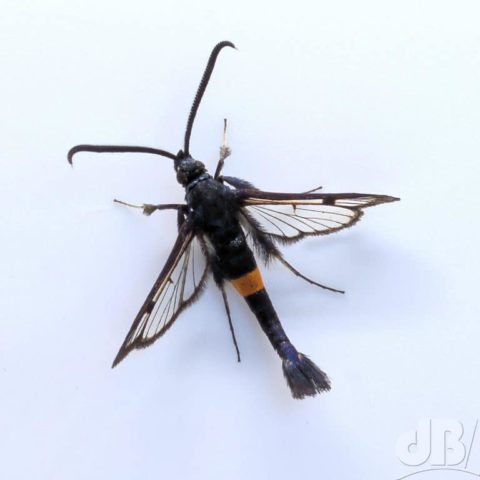
These are generally day-flying moths and look like tiny shimmering jewels if you catch sight of one. The males are attracted to sex pheromones exuded by the female. As such, it is possible to draw them to a lure impregnated with the appropriate sex pheromone for each species. The moths that arrive at the lure can then be counted and ticked, perhaps even photographed in the name of (citizen) science.
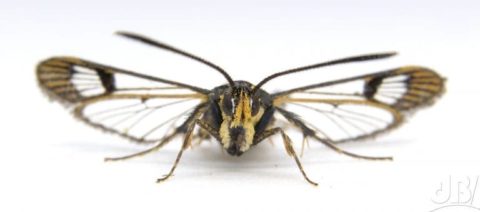
I purchased a set of pheromone lures from Anglian Lepidopterist Supplies ( a company that does exactly what it says in its name). I had previously used a lure for the Emperor moth with great success regular readers will recall. In the clearwing set there are lures for ten clearwing moth species. I began putting lures out individually on likely days – warm and breezy – back in May, but it is only into June that I’ve had success with the clearwings.
In early June, a Red-belted Clearwing was drawn to the target lure. By mid-June I was trying others and discovered that the lure for a different species, the Large Red-belted Clearwing drew in the smaller cousin – 14 of them, in fact! I put the lure out for the Hornet Moth next, no luck. Then, the Currant Clearwing, success this time. Then I tried the Orange-tipped Clearwing lure, and drew in not the target species but a Yellow-legged Clearwing. Later, I learned from an expert name of Anthony Wren, that those two lures are identical in composition and now I am musing on what that says about the evolutionary history of these two species.
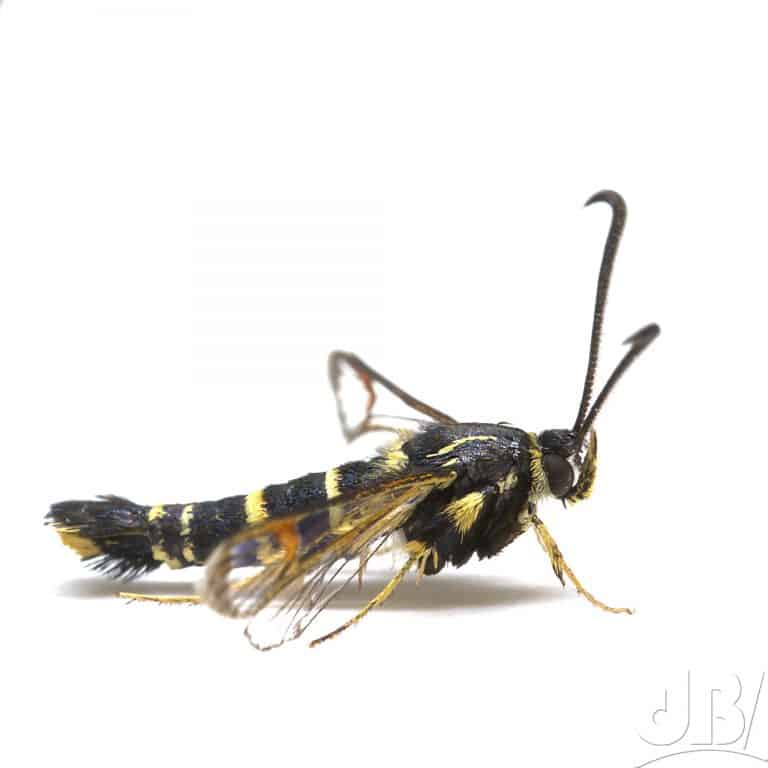
Clearly, the lures are not 100% on point when it comes to the species they attract. Now, ALS does list non-target species for each of its lures, so it is not entirely surprising. The reason is perhaps to do with the composition of the lures.
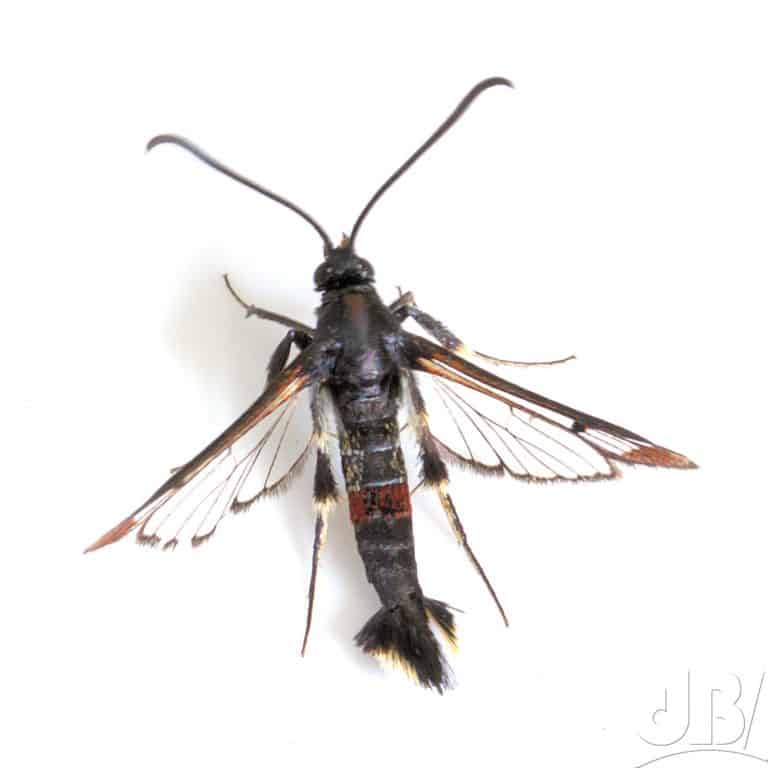
As I understand it, the lures each have the primary sex pheromone of the target female, but they also contain a mixture of other modified, volatile fatty acids and so on. This will lead to a degree of overlap in what the lure attracts because those other chemicals may well be interesting to other species of insect. It may not be about sexual attraction it could simply be that they are attractive or stimulating molecules. There does not seem to be a whole lot of clarity in the overall picture of what does what to each species yet, although there is a huge amount of excellent and ongoing research in this area.
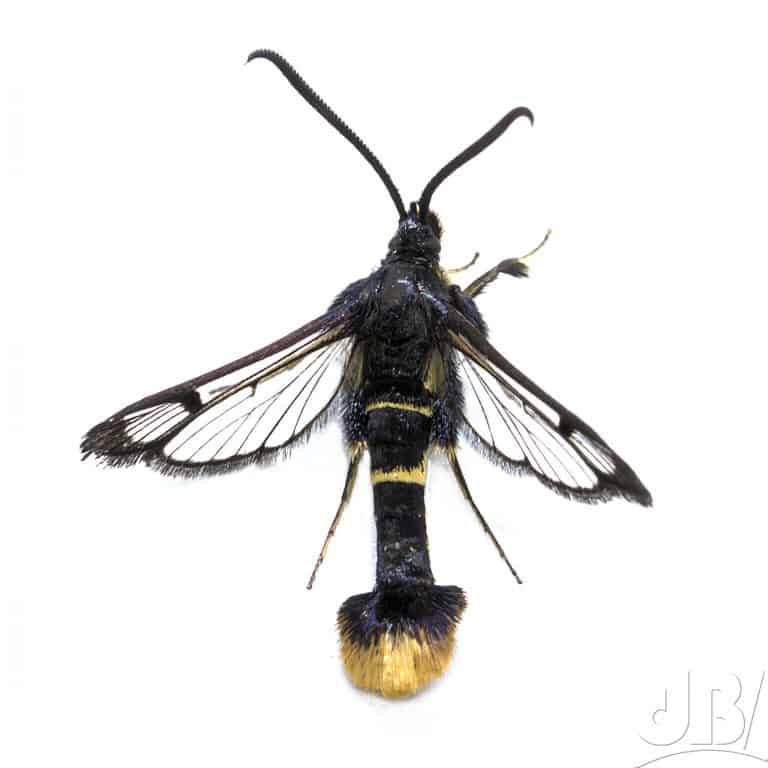
Orange-tailed Clearwing (Synanthedon andrenaeformis) with its golden hair pencil turned up (2 or 3) at about 10am to the SYN lure in the garden on 16th June 2021.